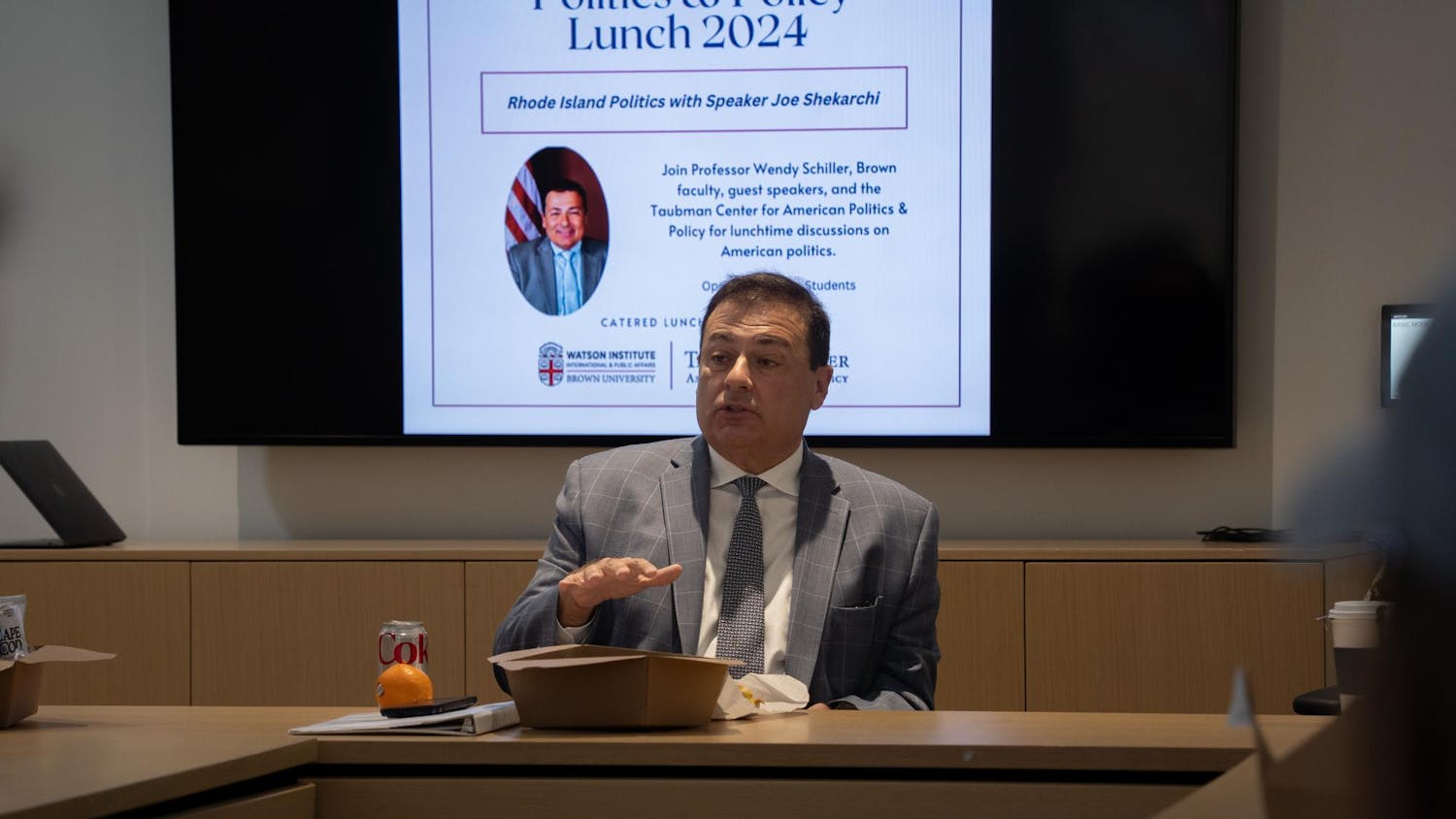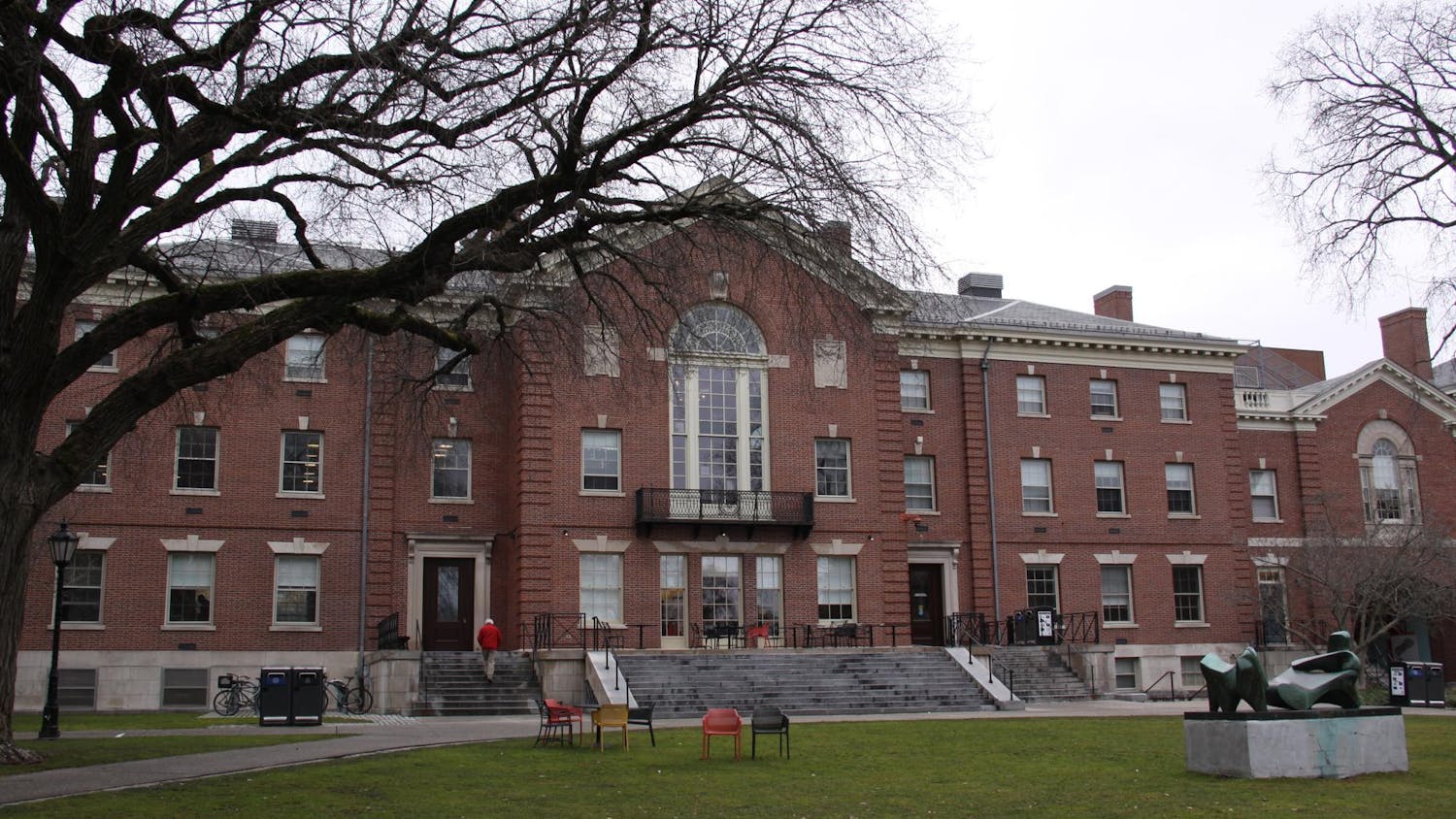President Christina Paxson P’19 spoke about her experience as an economist and discussed diversity in the field at a lecture held in the University’s Science Center yesterday afternoon.
Representatives from student groups including Women in Science and Engineering, the Science Cartoons Program and Mosaic+ attended the event, which was the first installment in this year’s “Seeing Myself in Science” lecture series. Organized by the Science Center, the lecture series has brought scientists of underrepresented backgrounds to campus since its in inception in fall 2016.
Paxson said she decided to study economics when she took an introductory course sequence in her junior year at Swarthmore College. Starting so late forced her to “pack all my (economics) courses into one year,” which “was really quite exciting,” Paxson said. Having previously studied philosophy, she enjoyed applying “a logical system of thinking to very real, very human problems.”
Misconceptions about economics can affect who chooses to enter the field, Paxson said. She recalled seeing a test her son took in middle school that defined economics as “the study of money.”
“It’s not the study of money, that’s ridiculous.” Paxson said. “It’s the study of human welfare.”
There is a disparity between men and women in doctoral programs and among professors in economics, Paxson said.
During the talk, Paxson highlighted three research papers she co-authored between 2004 and 2012. The first, which was published when Paxson was directing Princeton’s Center for Health and Wellbeing in 2004, asked whether orphans in 10 African countries received the same educational opportunities as children who weren’t orphans. The 10 countries featured in the study, which included Ghana, Kenya, Malawi, Mozambique and Zimbabwe, were selected for their HIV and AIDS rates.
“This was a time when the AIDS crisis was really at a boil in Africa and the roll-out of antiretrovirals really hadn’t gone very far, so AIDS was still a death sentence at that point,” Paxson said. “As a result of that, many, many people who had kids were dying, so the number of orphans in Africa was expanding rapidly.”
The research found that orphans were less likely to be enrolled in school than other children with whom they lived, which led the researchers to recommend targeted transfers like vouchers to pay for school fees.
The second study, published in 2010 while Paxson was a professor of economics and public affairs at Princeton, looked at the effect of unconditional cash transfers on the health and development of preschool children in Ecuador.
The researchers found that the program was tied to improvements in fine motor control and long-term memory, among other skills.
“I like this research because it showed that actually money matters, and you can have a big impact on … the school readiness of kids simply by giving their parents more resources,” Paxson said.
Director of the Science Center Gelonia Dent PhD’99 asked Paxson to discuss her administration’s work to increase diversity and inclusion at the University.
Paxson outlined the development of the University’s Diversity and Inclusion Action Plan, which aims to bolster teaching and research on diversity and inclusion issues and representation of historically underrepresented groups on campus, among other initiatives.
As the University works toward the 2016 DIAP benchmark of doubling the number of faculty from historically underrepresented groups by 2022, “we’re thinking a lot about cluster hiring in fields where it’s tougher and really focusing in on some departments and less on others,” Paxson said.
“Changing the faculty seems to me the most permanent way to change the culture,” Paxson said.
With the floor open for questions, Charles Somerville ’22 asked Paxson whether she would “be open to working with students to (bring) the distribution of African-Americans in the school” up to match the distribution in the U.S. population. 13.4 percent of the U.S. population is black or African American, according to the U.S. Census Bureau. As of fall 2017, 11.2 percent of University undergraduates identified as black or African American.
Paxson noted that under current laws, the University “can have loose targets,” for admissions from different racial groups but cannot set specific goals.
Paxson also expressed worry about the potential effects of the current lawsuit against Harvard, which alleges that Harvard discriminates against Asian American applicants. The lawsuit has implications for the future of affirmative action policies.
“This case could make it even harder to do what we’ve been doing already in the last 10 to 15 years, which is holistic admissions,” Paxson said, adding that appeals could take the case to the Supreme Court, which “has changed” since it last upheld affirmative action practices in 2016.
Somerville told The Herald that Paxson’s response to his question will help him “rephrase the question a little more next time and (consider) all of the variables that come into it.”
Stephanie Alvarado ’20 and Seneca Meeks ’20, the co-coordinators for Mosaic+, also attended the event. At Mosaic+ they “often think about representation and retention (in computer science), so it was interesting to see that’s an issue in economics as well,” Alvarado said.





